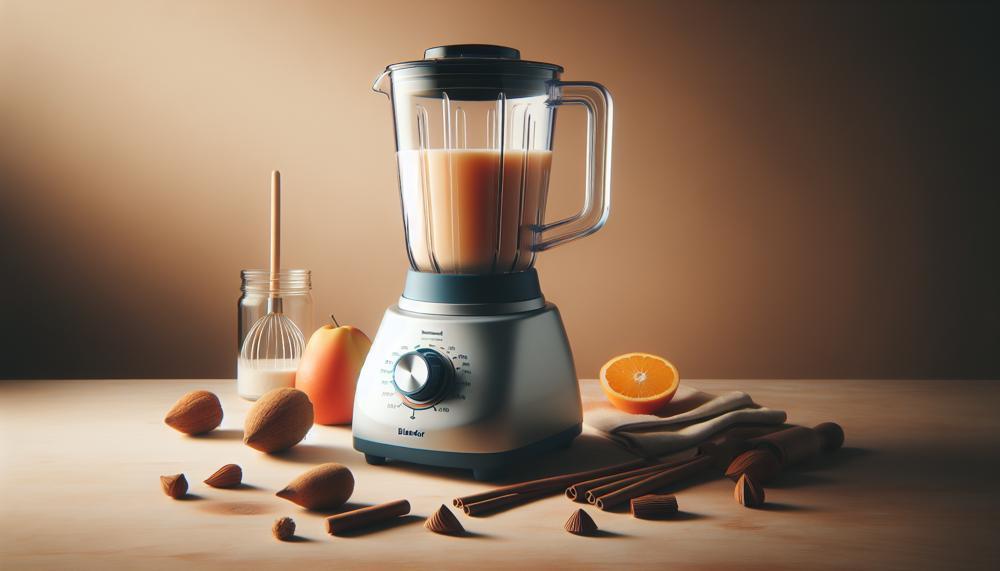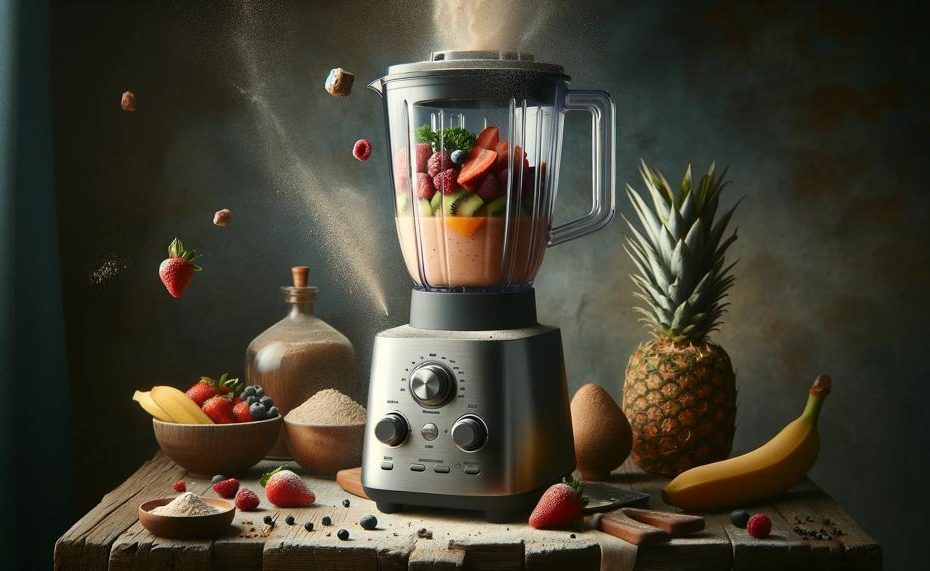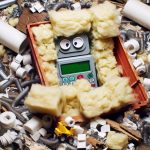Is your kitchen feeling cluttered and cramped with an old, bulky blender that just doesn’t cut it anymore? It may be time to bid farewell and upgrade to a sleeker, more powerful model. But before you toss your trusty blending companion into the garbage, take a moment to consider the environmental impact of improper disposal.
In this blog post, we’ll discuss the importance of properly disposing of appliances and provide step-by-step instructions on how to safely get rid of your blender.
So, can you throw away a blender?
No, you should not throw away a blender in the trash. Blenders are considered e-waste and should be recycled or reused.
Let’s dive in now.

Contents
- 1 Can blenders be recycled?
- 2 How to recycle blenders?
- 3 What are the benefits of recycling blenders?
- 4 What are the challenges of recycling blenders?
- 5 What to do before recycling your blender?
- 6 What are the best ways to recycle blenders?
- 7 How to make sure your recycling center accepts blenders?
- 8 What should you do if your recycling company doesn’t accept blenders?
- 9 What are the worst ways to recycle blenders?
- 10 Can you just throw your blender in the trash?
- 11 Conclusion
Can blenders be recycled?
Absolutely. Recycling is a responsible and sustainable option for disposing of old or broken blenders. But before you toss your blender, here are some important points to keep in mind:
- Recycling blenders is a responsible and sustainable way to dispose of them.
- Many cities have household waste collection services specifically for small appliances like blenders. Get in touch with your local waste management or recycling center to learn more.
- Some cities have dedicated e-waste collection centers that accept small appliances for proper disposal.
- If your city doesn’t have a recycling program for small appliances, try contacting local recycling centers or specialized facilities for proper disposal options.
- Proper disposal of blenders is crucial to minimize their environmental impact and reduce waste in landfills.
- Blenders are usually made from recyclable materials such as plastic, metal, and glass, making them easy to recycle.
- Donating your used blender is another option to consider. This not only extends its lifespan but also supports a worthy cause. Many organizations accept used appliances in good condition and put them to good use.
- Reusing and repurposing old appliances can also help reduce waste and demand for new resources.
- Some manufacturers may offer programs for recycling or repurposing used blenders. Check with the manufacturer of your blender to see if they have any such initiatives.
In conclusion, recycling old or broken blenders is not only possible but recommended for a more sustainable approach to disposal. It not only helps reduce waste but also conserves valuable resources. So remember, when it’s time to dispose of your blender, recycle it responsibly.
How to recycle blenders?
To recycle a blender in the correct manner, follow these simple steps:
- Check with your local waste management service or recycling center to see if they have a specific program for recycling small appliances such as blenders.
- If there is no designated program available, do a quick search online for “small appliance recycling near me” to find nearby facilities that accept such items.
- Once you have located a suitable facility or program, make sure to unplug the blender and let it cool down for a few days before disposing of it.
- Next, ensure that you separate the different parts of the blender. The jug, blades, and lid can usually be recycled with other plastic items, while the motor and wiring should be taken to an e-waste recycling program.
- Before recycling the jug, make sure to clean it thoroughly. While most blenders can be cleaned in the dishwasher, only the jug should be put in as other parts may contain wiring that could get damaged by water. You can also clean a blender by adding dish soap and water and turning on the machine to spin out any residue.
- If your blender is still in good working condition, consider donating it to a local charity or organization that accepts used appliances. This not only extends its lifespan but also supports a worthy cause.
- Alternatively, you can repurpose your old blender instead of disposing of it. It can be used as a planter, ladle, flower vase, or storage unit for small items like buttons and jewelry.
- Properly disposing of your old blender is essential in reducing waste and protecting the environment from harmful materials such as plastic that do not decompose easily.
By following these steps, you can ensure that your old blender is correctly recycled or reused, minimizing its impact on the environment and reducing waste. Always remember to check with your local recycling facilities for specific guidelines and regulations when it comes to recycling small appliances like blenders.
What are the benefits of recycling blenders?
Recycling your outdated blender instead of tossing it away has plentiful advantages, not only for the environment but also for you as an individual. By recycling, you are decreasing the amount of waste that ends up in landfills, lessening pollution and conserving valuable resources.
Moreover, recycling blenders can create job opportunities in the recycling industry and contribute to the circular economy.
Proper disposal of old appliances can also save you from potential fines for improper waste management. Now, let’s delve into the specific benefits of recycling blenders.
| Environmental Benefits | Personal Benefits |
|
|
In conclusion, recycling your outdated blender has numerous advantages for both the environment and yourself. By reducing landfill waste, pollution, and energy consumption, you are making a positive impact on the planet. Additionally, you can save money, get creative with repurposing, and support the circular economy by responsibly disposing of your old blender.
What are the challenges of recycling blenders?
Recycling blenders can be a daunting task, requiring proper preparation and knowledge. It presents several challenges that must be addressed for successful recycling. Some of the most common hurdles in recycling blenders and their solutions are:
- Disassembling the blender: Blenders come with multiple parts, including blades, containers, lids, and plugs, which can make disassembly a complicated process. This can discourage individuals from recycling their blenders as they may not know how to disassemble them properly.
- Remedy: Manufacturers should provide clear and easy-to-follow instructions on how to disassemble their blenders for recycling. Additionally, there are online resources and videos available that demonstrate how to take apart different types of blenders.
- Contamination: Blender parts may contain food residue or other contaminants, making them unsuitable for recycling.
- Solution: Before recycling, it is essential to properly wash and clean all the parts of the blender to remove any food residue or contaminants. In case the parts are not dishwasher safe, use warm soapy water and a sponge or cloth to clean them thoroughly.
- Lack of recycling facilities: Unfortunately, some areas do not have designated centers or depots for recycling small appliances like blenders.
- Solution: Check with your local waste management agency or municipality to find out if they have provisions for recycling small appliances like blenders. If not, consider donating or repurposing the blender instead.
- Non-recyclable parts: Not all parts of the blender may be recyclable, such as rubber gaskets or electrical components.
- Solution: Separate the non-recyclable parts from the rest of the blender and dispose of them according to your local waste management regulations. The remaining recyclable parts can then be recycled.
- Lack of awareness: Many people may not be aware that blenders can be recycled or may not know how to go about it.
- Solution: Educate yourself and others about the benefits of recycling blenders and how to properly prepare them for recycling. Share this information with friends and family, and encourage them to recycle their old blenders as well.
By overcoming these challenges, recycling blenders can become a more widespread and effective practice, leading to a cleaner and more sustainable environment. Recycling blenders not only benefits the planet but also helps create a more circular economy where materials are reused and repurposed, reducing the need for new resources.
What to do before recycling your blender?
Before disposing of your blender, it’s crucial to take several key steps to ensure responsible recycling and minimize harm to the environment. These steps include verifying if your blender is recyclable, thoroughly cleaning and separating its components, disassembling it as needed, and following local guidelines for recycling each part.
Additionally, it’s worth considering alternatives such as donating or repurposing your blender before recycling.
| Environmental Benefits | Personal Benefits |
|
|
By following these steps, you can properly dispose of your old blender while also making a positive impact on the environment. Remember to always check with your local recycling center for specific guidelines and recommendations for proper disposal.
Additionally, exploring alternative options such as donation or repurposing can also help reduce waste and give your old blender a new life.
What are the best ways to recycle blenders?
Recycling an old blender is not only a responsible way to dispose of it, but it also contributes to reducing waste and protecting the environment. To properly recycle your old blender, follow these steps:
- Check if your blender is recyclable: Before recycling, check the material composition of your blender. If it is made of glass, metal, or plastic, it can most likely be recycled. However, if it is made of ceramic or stone, it should be thrown away as garbage.
- Clean and separate parts: To ensure proper recycling, make sure to thoroughly clean your blender and remove any food residue. Separate the removable parts such as the lid, blade, and gasket from the main body to make the recycling process easier.
- Disassemble if necessary: Some blenders may have non-removable parts like blades or motors. In this case, consider disassembling the blender to separate these components for proper recycling.
- Follow local guidelines: Recycling guidelines for appliances may vary depending on your location. It is always best to check with your local waste management agency for specific guidelines on how to dispose of your old blender.
- Donate or repurpose: Before recycling, think about donating your old blender if it is still in good working condition. You can also get creative and repurpose it for projects such as using it as a planter or storage unit.
- Seal and dispose of blades: If you are throwing away your blender, remember to remove the blades and securely seal them in a garbage bag to prevent any potential injuries.
- Follow safety precautions: When handling any electrical item, always take necessary safety precautions to avoid accidents and injuries.
By following these steps, you can properly recycle your old blender without harming the environment. Remember to always check with local guidelines and consider alternative disposal methods before recycling.
How to make sure your recycling center accepts blenders?
There are various methods to determine if your nearby recycling center has the capacity to dispose of blenders. Follow these steps to confirm:
- Conduct research online: A quick search on Google or a visit to your city or town’s government website can provide you with relevant information regarding the accepted materials and disposal procedures at your local recycling center.
- Reach out to your local recycling center: You can also directly call or visit your nearby recycling center to inquire about their policy on accepting blenders for disposal. They may also be able to provide you with a list of other recyclable materials they accept.
- Check with the manufacturer: If you own a blender from a specific brand or manufacturer, it is worth checking if they have any recycling programs in place. This information can usually be found on their website or by contacting their customer service department.
- Evaluate the condition of your blender: Most recycling centers only accept blenders that are no longer functional. So, it is essential to assess the condition of your blender before attempting to recycle it.
By following these steps, you can determine if your local recycling center accepts blenders for disposal and ensure that your old appliance is disposed of properly.
What should you do if your recycling company doesn’t accept blenders?
If your recycling company does not accept blenders, you have various alternative options at your disposal to dispose of them properly.
These include donating or selling the blender, repurposing it for other uses, reaching out to your local waste management agency, searching for specialized recycling companies, checking with electronic stores, and utilizing mail-in recycling programs.
Each of these options ensures that the blender is disposed of correctly and in an eco-friendly manner. Let’s take a closer look at each of these choices.
- Donate or sell it: Donating or selling your blender is an excellent option if it is still in working condition. Not only does this keep the appliance out of landfills, but it also gives it a chance to continue being used by someone else.
- Repurpose it: Another option is to repurpose the blender for other uses. Get creative and use different parts of the blender for DIY projects, such as a sanding tool or a vase.
- Contact your local waste management agency: Your local waste management agency may have designated drop-off locations or recycling events for small appliances like blenders. It’s worth checking with them to see if they have any resources available on how to properly dispose of blenders.
- Look for specialized recycling companies: There are companies that specialize in recycling small appliances like blenders. They will disassemble the blender and recycle each part separately to ensure proper disposal.
- Check with electronic stores: Some electronic stores may accept small appliances for recycling, even if they don’t sell them. It’s worth giving them a call or checking their website to see if they have any programs in place.
- Consider a mail-in recycling program: There are also mail-in recycling programs specifically for small appliances like blenders. You simply pack up your blender and send it to the designated address, and they will handle the rest.
What are the worst ways to recycle blenders?
Recycling is the best way to dispose of blenders, but there are multiple methods that can harm the environment and contribute to pollution. These methods should be avoided as they can cause harm to natural ecosystems.
| Potential Harmful Method | Environmental Impact |
| Throwing in the trash | Pollution and release of toxic chemicals into the environment as it decomposes |
| Burning | Air pollution and health hazards from the release of harmful chemicals into the air |
| Disposing in bodies of water | Harm to aquatic life and disruption of the ecosystem |
| Burying | Soil pollution and harm to wildlife that may come into contact with it |
To avoid these harmful methods, it is crucial to recycle or repurpose old blenders properly. Here are some eco-friendly tips for disposal:
- Check with local waste management agencies for recycling options or designated drop-off locations for small appliances.
- Contact electronic stores as they may have recycling programs for old appliances.
- Utilize mail-in programs offered by specialized recycling companies.
- Repurpose your old blender into new items instead of disposing of it. This not only reduces waste but also gives the appliance a new life.
- Consider donating your working blender to a charity or thrift store. This not only reduces waste but also helps someone in need.
- If your blender is still functional, consider selling it or giving it away to someone who may need it. This extends its lifespan and reduces waste.
To ensure responsible disposal of blenders, it is essential to educate oneself on the proper methods and resources available.
Can you just throw your blender in the trash?
No, it is not a safe or environmentally-friendly practice to dispose of a blender by simply tossing it into the trash. While it may seem like the easiest solution, it can have harmful consequences for the environment. Let’s delve into why this is not a recommended method of disposal.
To start, blenders are constructed with a variety of materials including plastic, metal, and glass. When they are discarded in the trash, they will most likely end up in landfills. In these landfills, these materials can take hundreds of years to break down, releasing dangerous chemicals and microplastics into the environment. This can lead to pollution of the soil and water, harm to wildlife, and disruption of natural ecosystems.
Moreover, disposing of a blender in the trash means it will not be recycled. Recycling is the optimal choice for disposing of a blender as it is made from recyclable materials. By recycling, these materials can be repurposed and used to create new products, reducing the need for raw materials and minimizing environmental impact.
Additionally, certain areas have specific guidelines for recycling household appliances like blenders. If your area does not have these guidelines in place, there may be recycling centers or depots where you can drop off your old blender. You can also inquire with your local waste management or environmental agency for proper disposal methods.
Conclusion
In conclusion, disposing of your old blender through recycling is not only a responsible choice, but also has numerous benefits for both the environment and yourself.
By reducing waste, conserving resources, and promoting a circular economy, recycling blenders can make a significant positive impact on our planet.
But before you toss your trusty blending companion into the garbage, remember to follow these crucial steps: check if your blender is recyclable, thoroughly clean and separate its parts, disassemble if necessary, follow local guidelines for recycling each component, consider donating or repurposing it first, and always prioritize safety.
By taking these actions and consulting with your local waste management agency or recycling center, you can ensure that your old blender will be properly recycled without causing harm to the environment.





